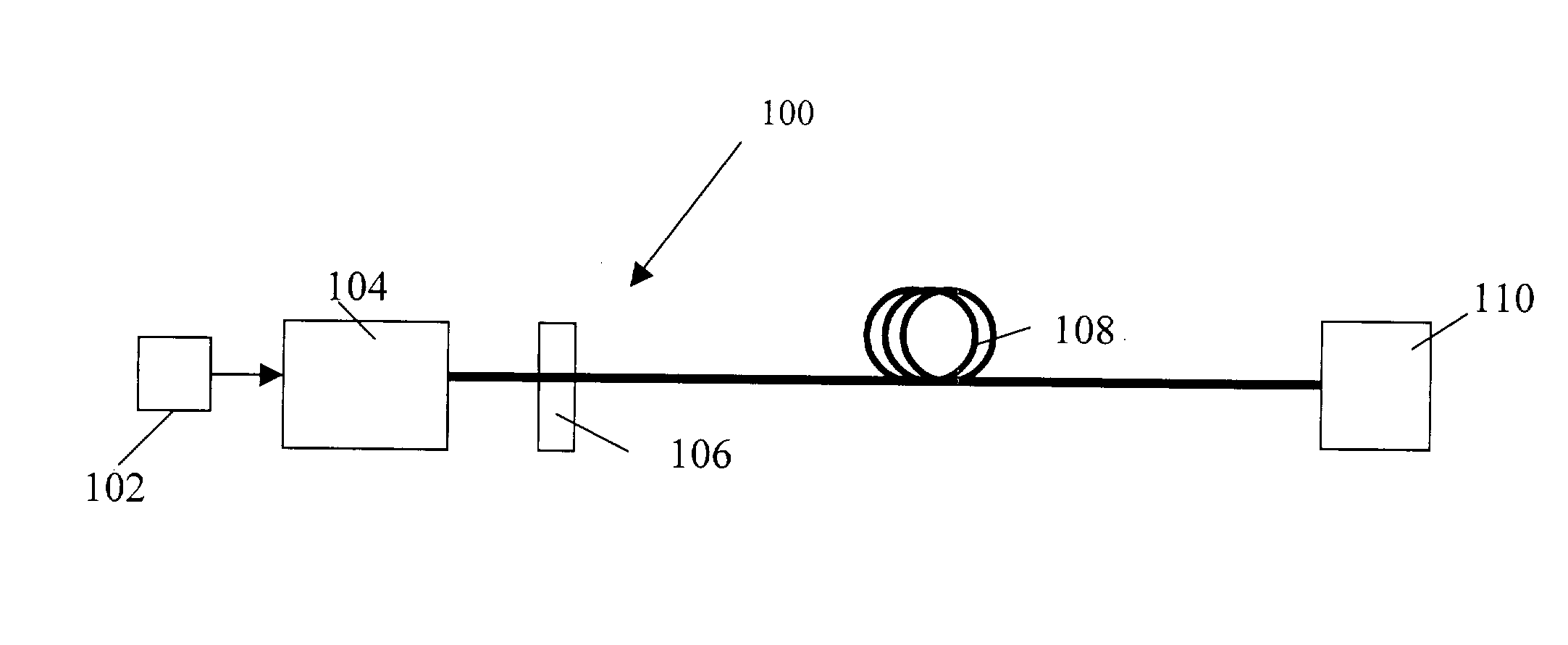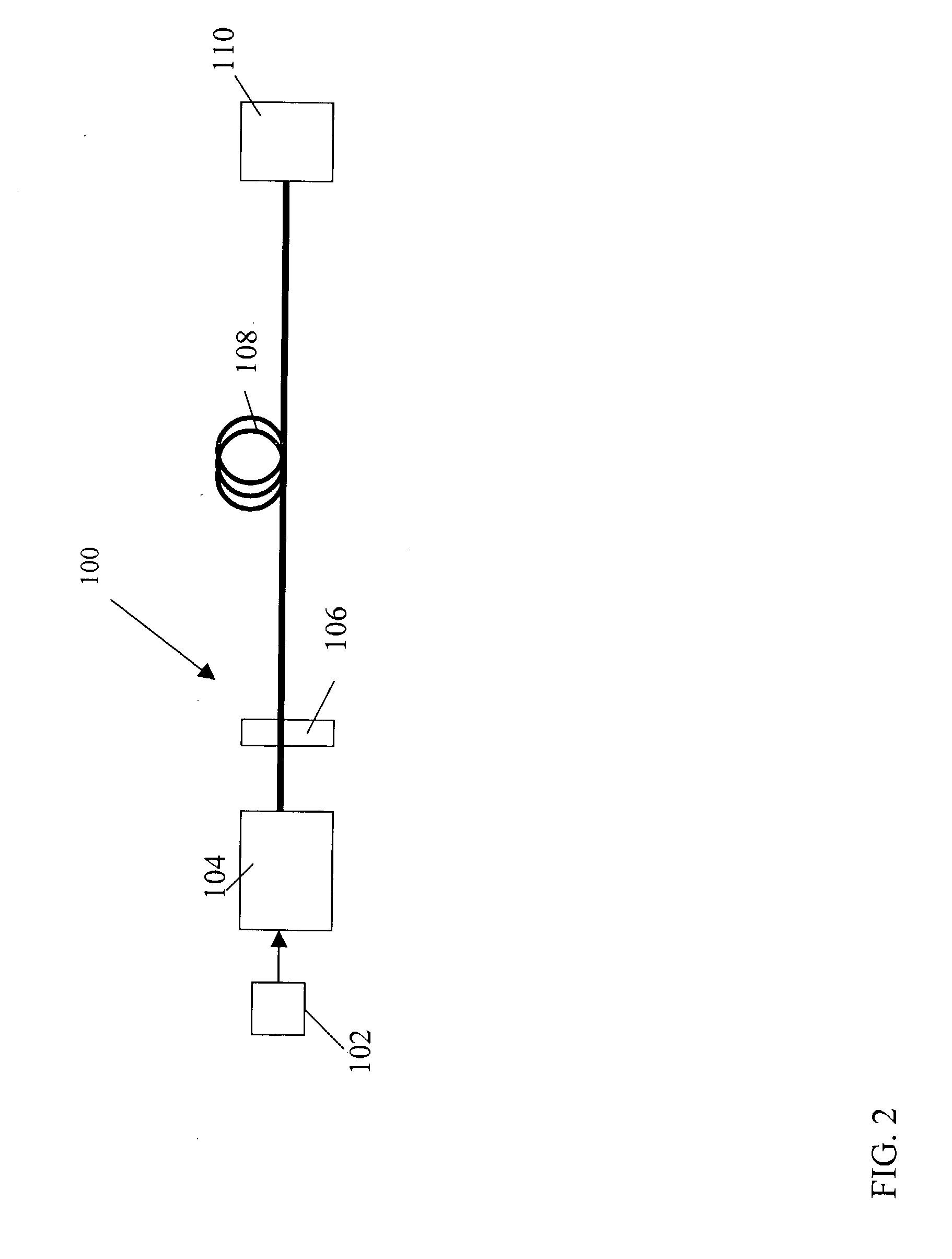High-speed transmission system comprising a coupled multi-cavity optical discriminator
a transmission system and optical discriminator technology, applied in the field of high-speed optical transmitters, can solve the problems of increasing system power penalties to unacceptable levels, high chirping output, and limited application of directly modulated laser transmitters
- Summary
- Abstract
- Description
- Claims
- Application Information
AI Technical Summary
Problems solved by technology
Method used
Image
Examples
Embodiment Construction
[0034] FIG. 2 illustrates a fiber optic system 100 that includes a current modulator 102 that modulates a laser source 104. The current modulator 102 may directly modulate the laser source 104. In this regard, U.S. Pat. No. 6,331,991 by Daniel Mahgereftech, issued Dec. 18, 2001 is hereby incorporated by reference into this application. The laser source 102 may be a variety of different types of lasers such as a semiconductor laser. The laser may be biased high above the threshold and the level of modulation may produce a predetermined extinction ratio, such as about 2 dB to about 7 dB. The signal from the laser may then pass through an optical discriminator 106 with a dispersion D.sub.discriminator in ps / nm and the signal from the laser may be passed through one of its transmission edges. The optical discriminator 106 may convert a partially frequency modulated (FM) signal to a substantially amplitude modulated (AM) signal. In this example, the optical discriminator 106 may be a cou...
PUM
 Login to View More
Login to View More Abstract
Description
Claims
Application Information
 Login to View More
Login to View More - R&D
- Intellectual Property
- Life Sciences
- Materials
- Tech Scout
- Unparalleled Data Quality
- Higher Quality Content
- 60% Fewer Hallucinations
Browse by: Latest US Patents, China's latest patents, Technical Efficacy Thesaurus, Application Domain, Technology Topic, Popular Technical Reports.
© 2025 PatSnap. All rights reserved.Legal|Privacy policy|Modern Slavery Act Transparency Statement|Sitemap|About US| Contact US: help@patsnap.com



